Leadcold is a lead-cooled small modular reactor (SMR) technology developer based in Sweden. They are conducting a feasibility study on the construction and operation of a demonstration Swedish Advanced Lead Reactor (SEALER).
The SEALER-D reactor is intended to have a thermal output of eighty megawatts. The fuel rods will be cooled by about eight hundred tons of liquid lead. The reactor will have a height and a diameter of about fifty feet.
The company stated that building the research reactors is an important step for Leadcold to start producing SMRs for the global market. Leadcold’s goal is for its first SEALER-55 commercial reactor to be ready for operation by 2030. It is assumed that permission to conduct nuclear activities will be granted.
Jacob Stedman is the CEO of Leadcold. He said, “Sweden needs more baseload power that can complement the rapid and important expansion of wind and solar. This reactor will be the first step towards the next generation of nuclear for cheap and safe baseload electricity. We look forward to now starting to investigate the conditions for Sweden’s next research reactor in collaboration with Studsvik AB, the municipality and the authorities.”
Joakim Lundström is the Business Area President for Fuel and Materials Technology at Studsvik AB. He said “It is positive that Leadcold is investigating the possibilities for a research reactor at Studsvik, where we can contribute with our unique and world-leading expertise.”
In a press release, Studsvik AB said, “Such a development would fit well within the other research and development activities taking place on our site. We look forward to helping to contribute towards LeadCold’s evaluation with our diverse array of expertise ranging from nuclear fuel, reactor materials, and testing development and infrastructure to our efficient solutions for waste handling, and we hope our site proves a suitable location for their reactor.”
Uniper Sweden, Leadcold and the Royal Institute of Technology (KTH) announced in February 2021 that they are collaborating. Together they are exploring the possibility of constructing a demonstration Leadcold SEALER reactor at the Oskarshamn nuclear power plant site by 2030. The partners received a ninety-nine million dollar grant from the Swedish Energy Agency towards building a two and a half megawatts of thermal energy non-nuclear prototype (SEALER-E) at Oskarshamn.
The SEALER design generates fifty-five megawatts over a ten-to-thirty-year period without requiring refueling. After operation, the first SEALER units will be moved to a centralized recycling facility.
Stedman said, “The development of new nuclear power must take place in close cooperation with the municipality, the government and the authorities. Sweden has become a very good country to develop the nuclear power of the future in. We have committed political decision-makers, competent authorities, and consumers and industry who want cheap and green electricity. We look forward to taking the first step towards building Sweden’s next nuclear reactor.”
Leadcold is a spin-off from KTH in Stockholm. Lead-cooled reactors have been under development since 1996. Leadcold was founded in 2013 as a joint stock company. It has Canadian subsidiary, Leadcold Reactors Inc. This subsidiary is registered in Alberta, Northwest Territories and Nunavut.
Blog
-
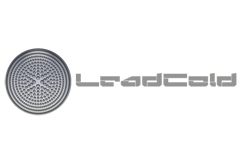
Nuclear Reactors 1137 – Leadcold Developing Lead Cooled Small Modular Reactors In Sweden
-
Nuclear News Roundup Mar 06, 2023
Russians warned of nuclear attack after hackers break in to country’s TV service news.yahoo.com
Visiting Professor Talks Protest Music in Japan Following the Fukushima Nuclear Disaster newsletter.blogs.wesleyan.edu
Italy’s Enel, UK’s Newcleo Link up on Nuclear Energy Technology usnews.com
Seaborg joins TerraPraxis coal-to-nuclear initiative world-nuclear-news.org
-
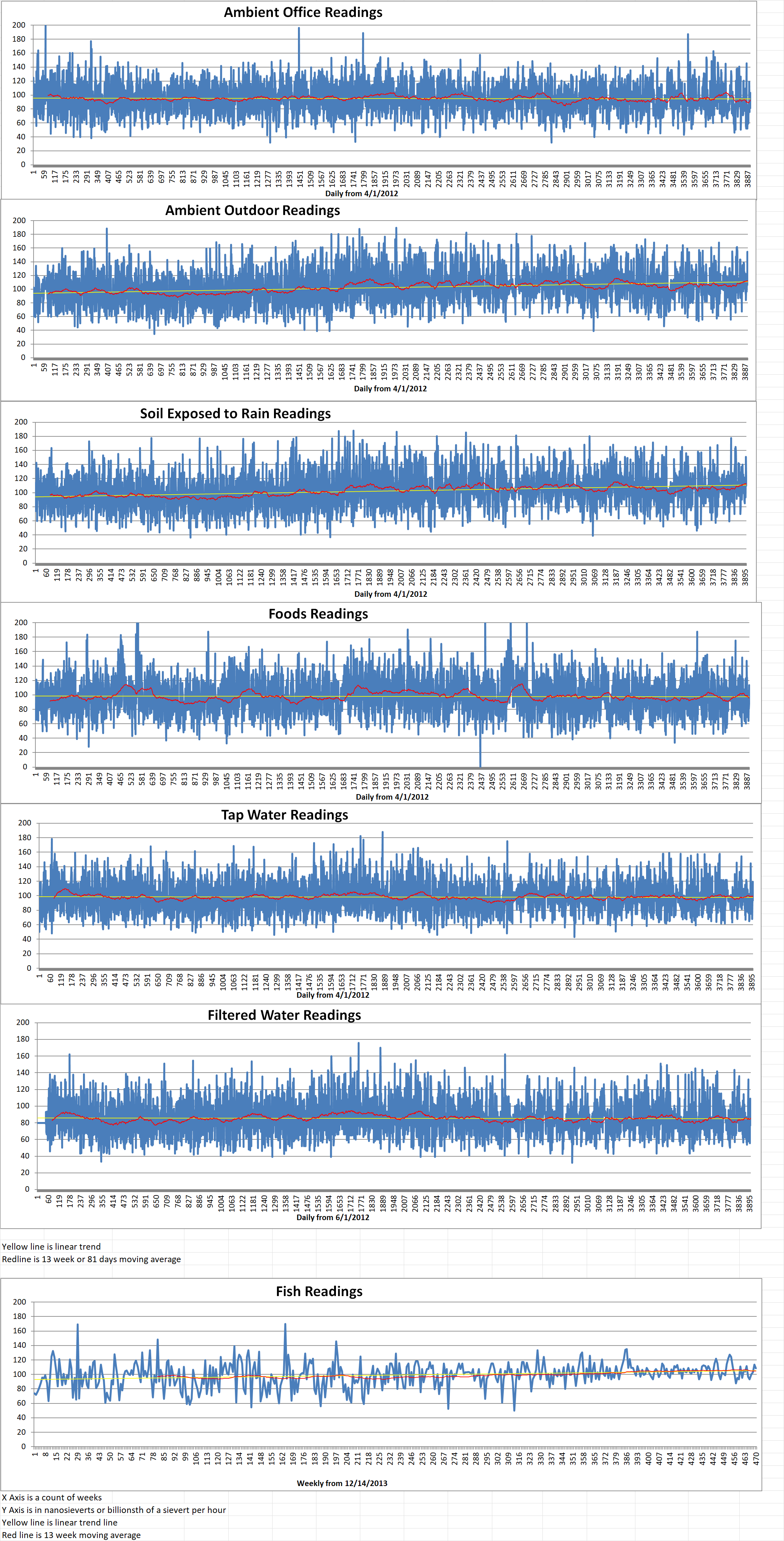
Geiger Readings for Mar 06, 2023
Ambient office = 81 nanosieverts per hour
Ambient outside = 116 nanosieverts per hour
Soil exposed to rain water = 123 nanosieverts per hour
English cuumber from Central Market = 100 nanosieverts per hour
Tap water = 94 nanosieverts per hour
Filter water = 80 nanosieverts per hour
-
Nuclear News Roundup Mar 05, 2023
Projects produce new energy: Clean hydrogen combines with clean nuclear oswegocountynewsnow.com
IAEA chief slams ‘complacency’ over stricken Zaporizhzhya nuclear power plant unews.un.org
TN Tech unveils plans for new nuclear engineering program local3news.com
‘Putin’s nuclear threat is a REAL threat…not just words’, Russian opposition politician warns dailymail.co.uk
-
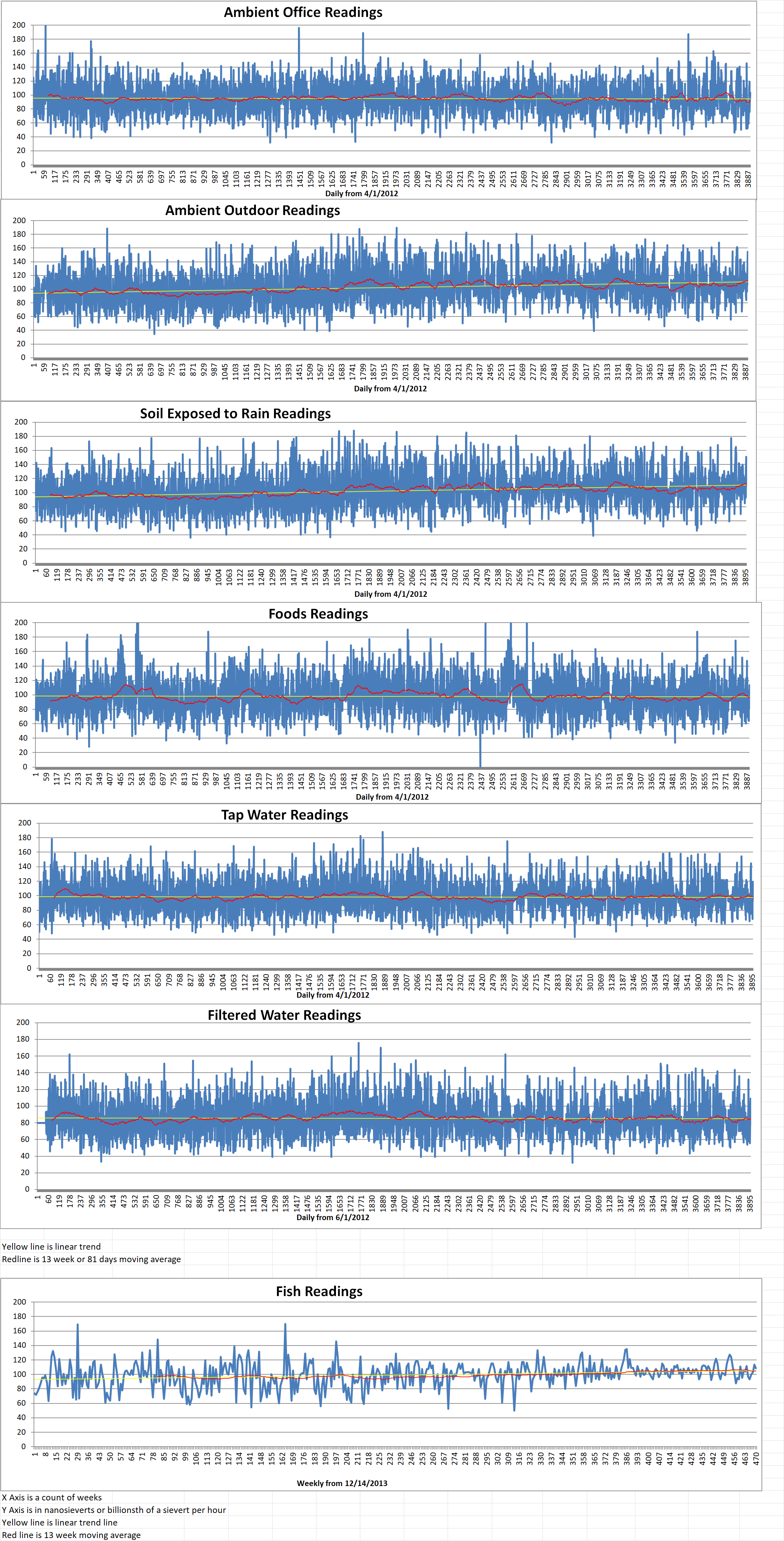
Geiger Readings for Mar 05, 2023
Ambient office = 103 nanosieverts per hour
Ambient outside = 106 nanosieverts per hour
Soil exposed to rain water = 110 nanosieverts per hour
Blueberry from Central Market = 114 nanosieverts per hour
Tap water = 96 nanosieverts per hour
Filter water = 77 nanosieverts per hour
-
Nuclear News Roundup Mar 04, 2023
Westinghouse Celebrates First Criticality at Vogtle Unit 3 with Southern Nuclear, Georgia Power and Other Partners westinghousenuclear.com
Terrestrial Energy opens nuclear technology development office in Calgary calgaryhearld.com
Plant Vogtle nuclear expansion reaches key milestone mainstreetnews.com
U.S. Navy names new nuclear submarine after Louisiana native, former Secretary of Navy foxnews.com
-

Geiger Readings for Mar 04 2023
Ambient office = 102 nanosieverts per hour
Ambient outside = 155 nanosieverts per hour
Soil exposed to rain water = 151 nanosieverts per hour
Asparagus from Central Market = 91 nanosieverts per hour
Tap water = 119 nanosieverts per hour
Filter water = 109 nanosieverts per hour
Dover Sole from Central = 109 nanosieverts per hour
-
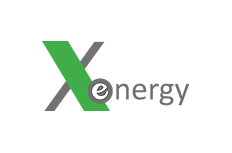
Nuclear Reactors 1136 – Dow and X-energy Are Collaborating On Developing Xe-100 Reactors
Dow and X-energy have signed a joint development agreement (JDA) to develop a four-unit Xe-100 high-temperature gas reactor facility at one of Dow’s U.S. Gulf Coast sites.
In August of 2022, the two companies signed a Letter of Intent which stated that they will work to help Dow advance its carbon emissions reduction goals through the development and deployment of X-energy’s advanced small nuclear reactor (SMR) nuclear technology. Dow will also take a minority equity stake in X-energy.
The Xe-100 is one of two designs selected by the U.S. Department of Energy (DoE) in 2020 to receive eighty million dollars each of initial cost-shared funding. The funds will support the construction of an advanced reactor demonstration plant that can be operational within seven years. Planning is underway for a four-unit Xe-100 plant to be constructed at a site in Washington State.
X-energy announced that “As a sub-awardee under the US Department of Energy’s Advanced Reactor Demonstration Program (ARDP) Cooperative Agreement with X-energy, Dow intends to work with X-energy to install their Xe-100 high-temperature gas-cooled reactor plant at one of Dow’s US Gulf Coast sites, providing the site with safe, reliable, low-carbon power and steam within this decade.”
The JDA includes up to fifty million dollars in engineering work. Up to half of which is eligible to be funded through the Advanced Reactor Demonstration Program, and the other half by Dow. The JDA work scope also includes the preparation and submission of a construction permit application to the U.S. Nuclear Regulatory Commission (NRC).
Working with the DoE and subject to its approval, Dow and X-energy expect to finalize the selection of a site in 2023. The two companies intend to preform more ARDP-related work under the JDA as the project progresses. Additionally, they have agreed to develop a framework to jointly license and utilize the technology and lessons learned from the project. This would enable other industrial customers to effectively utilize the Xe-100 industrial low-carbon energy technology.
Each Xe-100 reactor is engineered to operate as a single eighty megawatt electrical unit. They will be combined in groups of four as an optimal configuration to produce three hundred and twenty megawatts. The reactor can provide baseload power to an electrical grid or support industrial application with two hundred megawatts of thermal output per unit of high pressure, high temperatures steam.
X-energy said, “The four-reactor Xe-100 nuclear plant will provide a Dow facility with cost-competitive, low-carbon process heat and power to make essential products used by consumers and businesses every day.”
Dow is working to deliver a thirty percent reduction in its scope 1 and 2 carbon emissions from 2005 levels by 2030. They aim to achieve carbon neutrality by 2050. The company is committed to transitioning its sites and operations globally to cleaner power.
Jim Fitterling is the Dow chairman and CEO. He said, “The utilization of X-energy’s fourth generation nuclear technology will enable Dow to take a major step in reducing our carbon emissions while delivering lower carbon footprint products to our customers and society. The collaboration with X-energy and the DOE will serve as a leading example of how the industrial sector can safely, effectively and affordably decarbonize.”
Clay Sell is the CEO of X-energy. He said, “X-energy’s collaboration with Dow brings added significance because of the immense opportunity to further reduce emissions in the energy-intensive industrial sector. From the beginning to the end of the supply chain, our technology can supply both power and heat to businesses in most sectors of the economy to help limit their carbon footprint. We are thrilled to work with Dow to deliver a successful project and illustrate the broad, highly flexible applications of X-energy’s proprietary nuclear energy technology.” -
Nuclear News Roundup Mar 03, 2023
Six US Air Force employees fired for failing to keep nuclear weapons stockpile secure independent.co.uk
Production under way of prototype pump unit for lead-cooled BREST-OD-300 world-nuclear-news.org
China urges Japan not to arbitrarily discharge nuclear-contaminated water shine.cn
U.S. Navy naming new nuclear submarine after Louisiana native theadvertiser.com
-
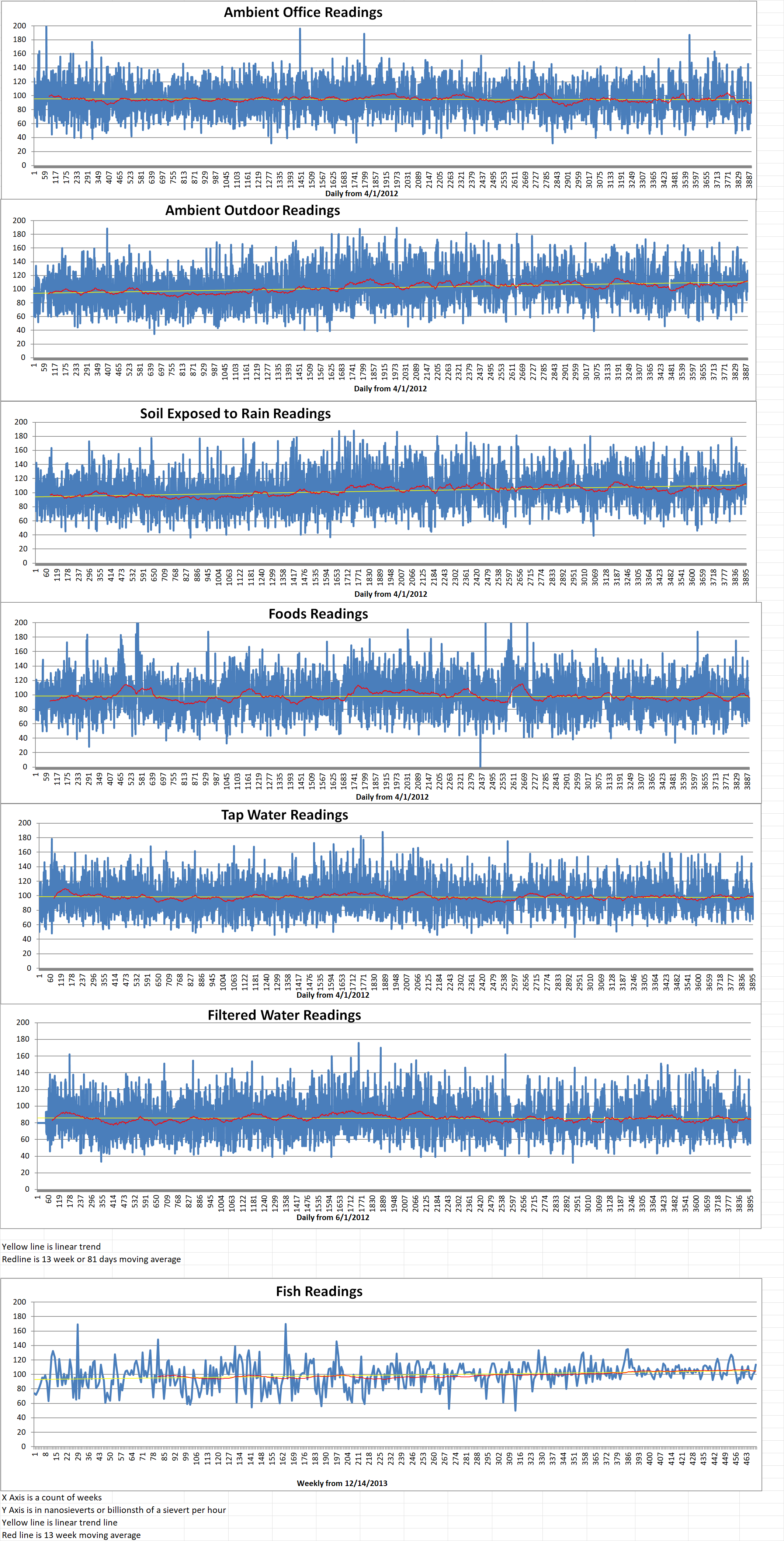
Geiger Readings for Mar 03, 2023
Ambient office = 93 nanosieverts per hour
Ambient outside = 127 nanosieverts per hour
Soil exposed to rain water = 134 nanosieverts per hour
Avocado from Central Market = 81 nanosieverts per hour
Tap water = 93 nanosieverts per hour
Filter water = 85 nanosieverts per hour
